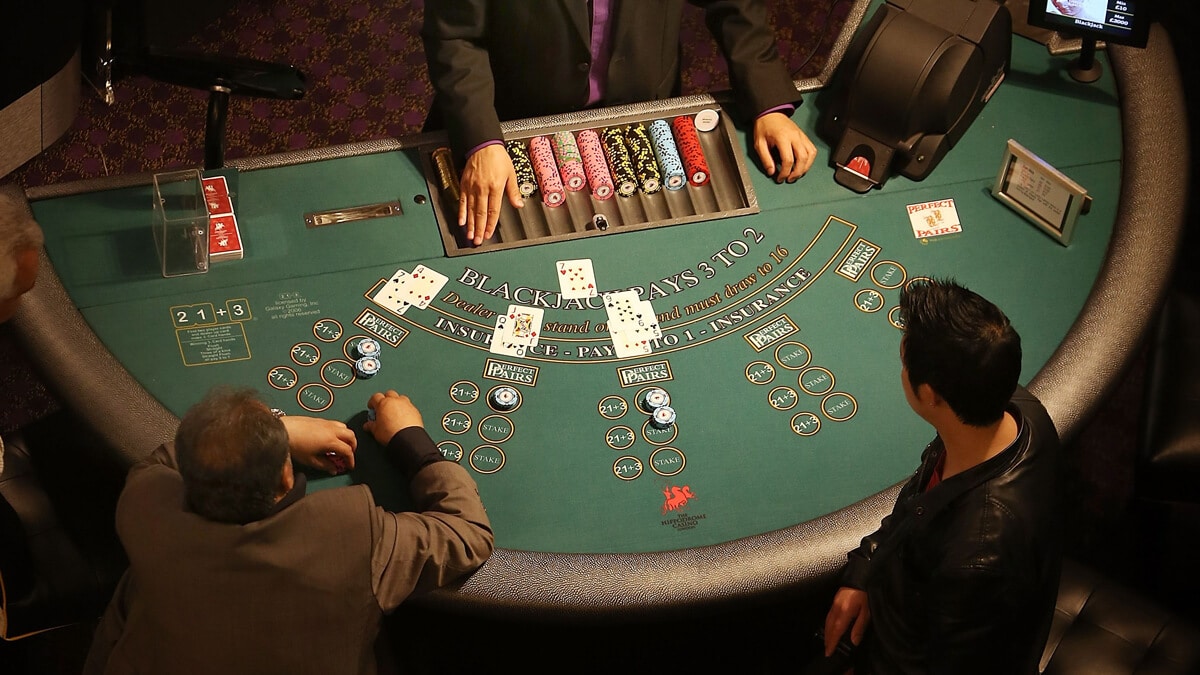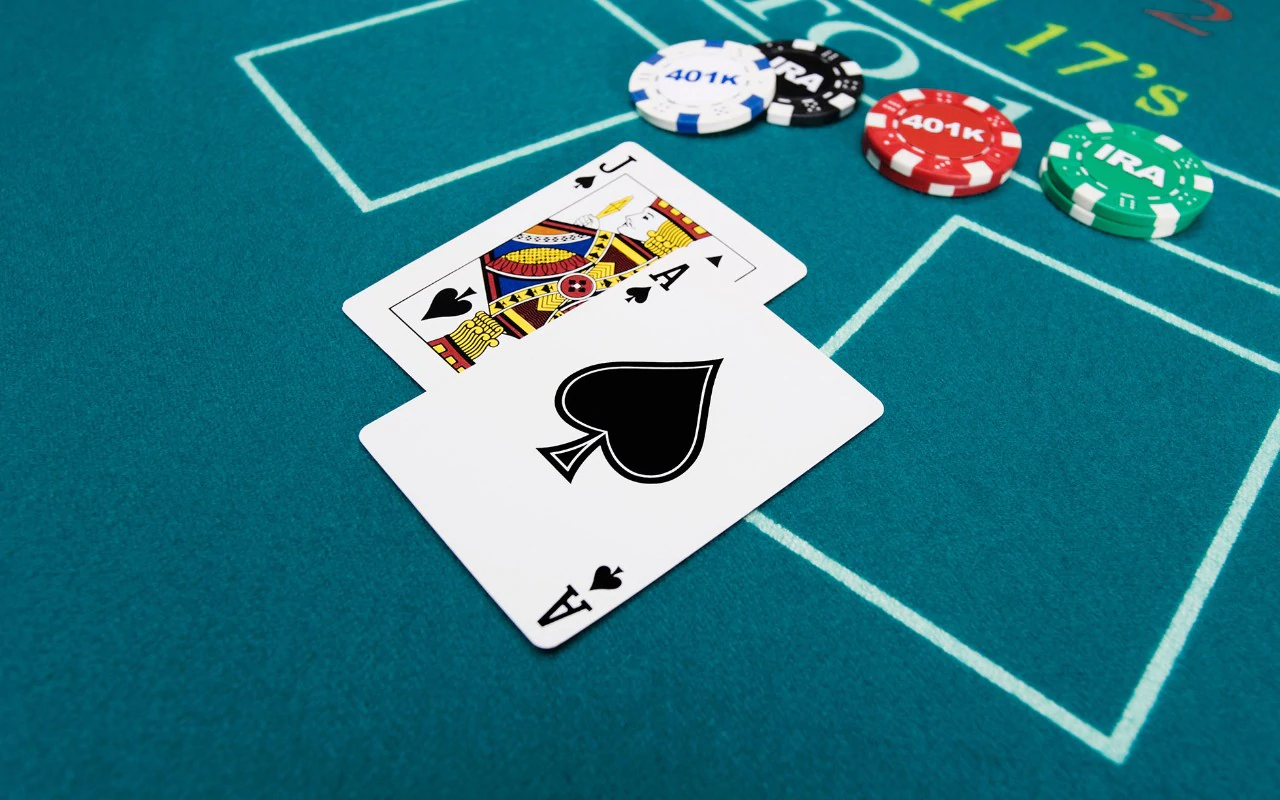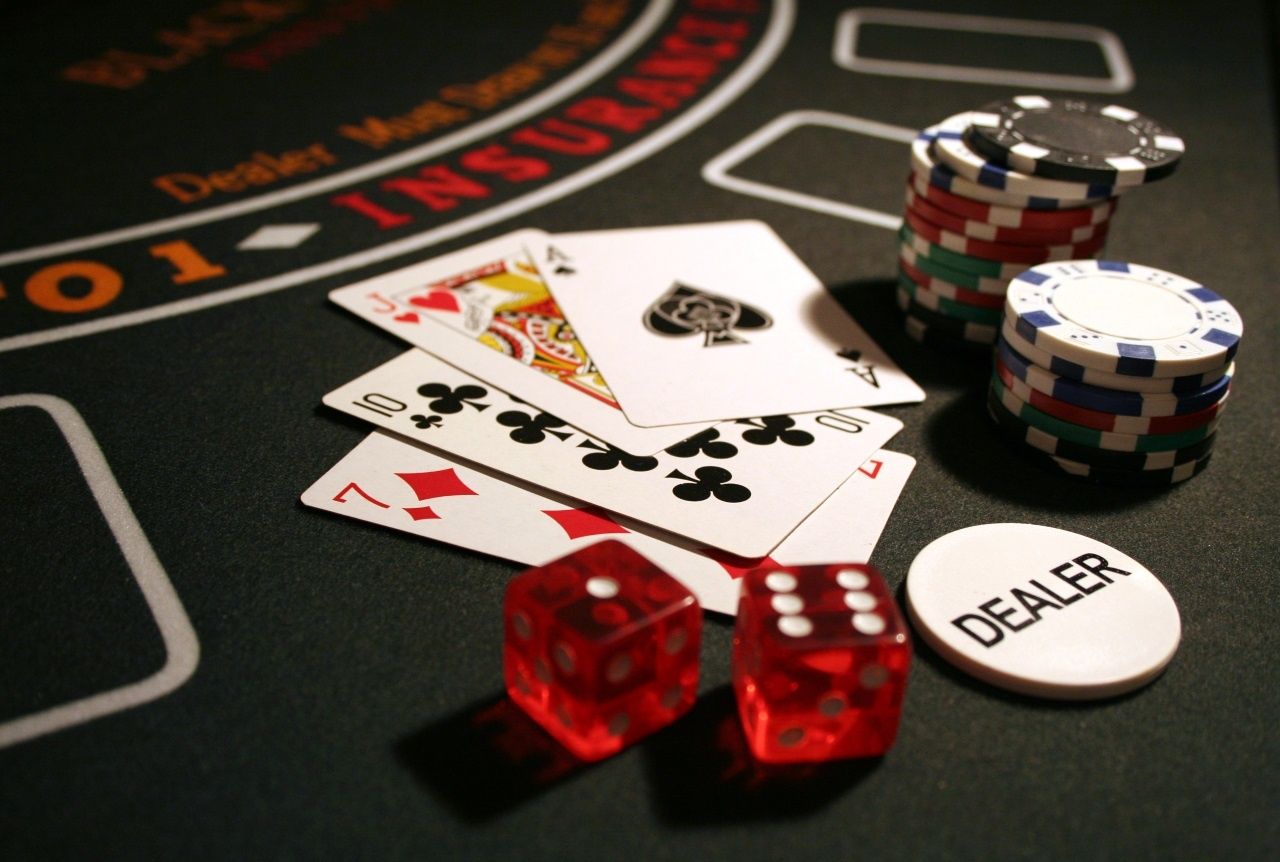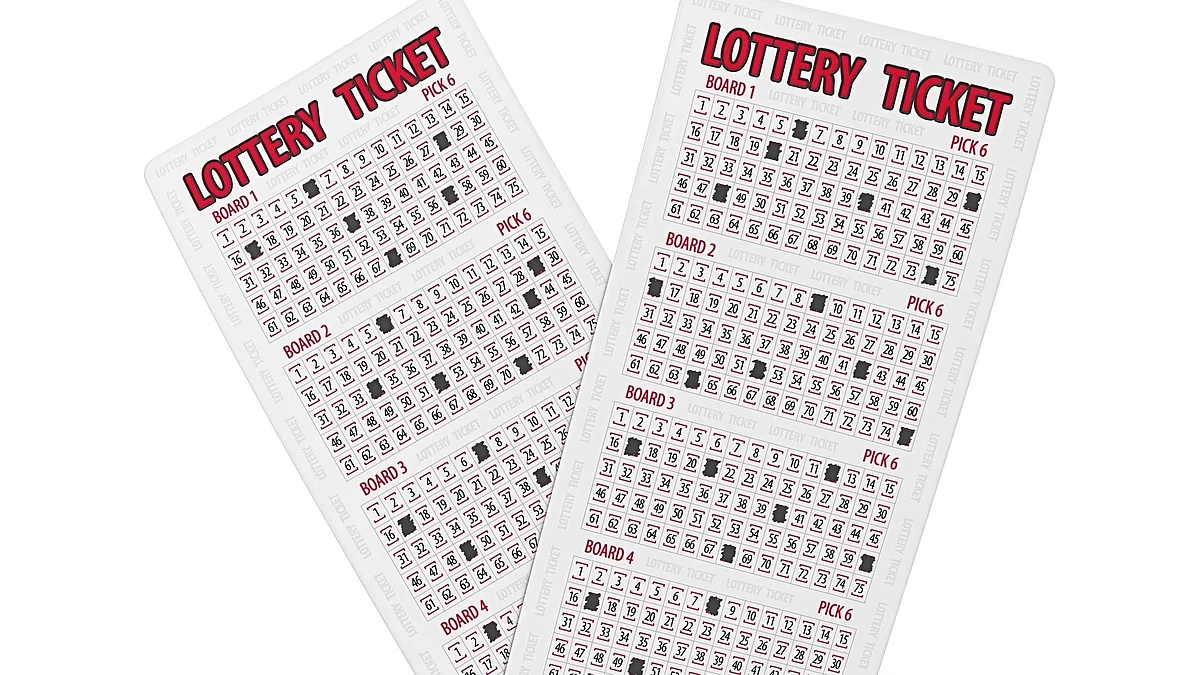Introduction
What Is A Soft 17 In Blackjack: In the game of blackjack, understanding the concept of a “soft 17” is crucial for players to make informed decisions and optimise their strategies. A soft 17 refers to a hand that contains an Ace valued as 11, along with a six, totaling 17. The term “soft” is used because the Ace can be counted as either 1 or 11, providing flexibility in the hand’s value.
Unlike a “hard 17,” which consists of a seven and a ten-valued card, a soft 17 offers players more options. The Ace’s dual value allows players to make strategic decisions based on the dealer’s up-card and the desired outcome. For instance, if the dealer’s up-card is low, players may choose to hit and draw another card to improve their hand. Conversely, if the dealer’s up-card is strong, players may opt to stand and hope the dealer busts.
The significance of a soft 17 lies in the fact that the dealer’s play is often predetermined by the casino’s rules. Some casinos require the dealer to hit on a soft 17, while others require them to stand. This rule variation impacts the odds and potential outcomes of the game, making it crucial for players to be aware of the specific rules in play. Understanding the dynamics of a soft 17 empowers players to devise strategies based on the dealer’s up-card and the desired outcome, maximising their chances of winning in the game of blackjack.

What is the difference between hard 17 and soft 17?
In literal terms, Soft 17 is another way of describing a blackjack hand worth 17 which includes an Ace, where the Ace counted either as 1 or 11. A Soft hand cannot bust if you take one card more. In contrast, a hard hand is simply one without an Ace, or which includes an Ace but it can bust if another card is taken.
In the game of blackjack, the terms “hard 17” and “soft 17” refer to specific hand totals that include an Ace. The difference lies in how the Ace is valued in each hand. A hard 17 is a hand that does not contain an Ace or contains an Ace that is counted as 1. For example, a hand consisting of a 10 and a 7 is a hard 17. In this case, the Ace cannot be counted as 11 because it would cause the hand to exceed a total of 21.
On the other hand, a soft 17 is a hand that includes an Ace valued at 11. It typically consists of an Ace and a 6, totaling 17. The Ace in this hand is flexible and can be counted as 1 if needed. This means that the player has the option to improve their hand by counting the Ace as 1, reducing the risk of busting. The distinction between hard 17 and soft 17 is important because it affects the player’s strategy.
Should you hit on a soft 17 in blackjack?
If it’s good enough for the dealer, it’s the same for players hitting soft 17 is always better than standing. Therefore, one of the golden rules of smart play is this: No matter what blackjack game you are playing, never stand on soft 17. The decision to hit or stand on a soft 17 in blackjack depends on the specific rules of the game and the dealer’s up card.
In most traditional blackjack games, it is advisable to hit on a soft 17. The reason for hitting on a soft 17 is to increase the chances of improving the hand and achieving a stronger total. Since a soft 17 consists of an Ace and a 6 (valued at 11), there is no risk of bursting with a one-card hit. By hitting, you have the opportunity to draw a lower-value card (2 to 9) and convert the Ace to a value of 1, creating a new total that allows further hits or the option to stand.
However, it is important to note that there are variations of blackjack where the dealer is required to stand on a soft 17. In such cases, the decision to hit or stand on a soft 17 becomes different for the player. It is crucial to familiarise yourself with the specific rules of the game being played to determine the optimal strategy for soft 17. Ultimately, following basic blackjack strategy charts, which take into account the specific rules, will help guide your decision-making process and increase your chances of making the most advantageous move on a soft 17.

How do you hit on soft 17 in blackjack?
But if the dealer hits soft 17, basic strategy players go ahead and double against the Ace, too. With Ace-7 — a two-card soft 18 — we double down against 3 through 6 if the dealer stands on all 17s. If the dealer hits soft 17, we double against all those up cards, and also double against a 2.
When facing a soft 17 in blackjack, the decision to hit or stand depends on the specific rules of the game and the dealer’s up-card. In some variations, the dealer is required to hit on soft 17, while in others, the dealer must stand. Here’s how to approach hitting on a soft 17:
- Assess the dealer’s up-card: Evaluate the dealer’s visible card to gauge the strength of their hand. Consider the likelihood of the dealer busting or having a strong hand.
- Review the rules: Determine whether the casino or table rules require the dealer to hit or stand on soft 17. This information is crucial in deciding your strategy.
- Consider your hand’s potential: Assess the value of your soft 17 hand and the potential for improvement. Remember that hitting could lead to a higher total, such as drawing a small card and changing the Ace’s value to one.
- Weigh the risks: Evaluate the risks associated with hitting. Keep in mind the possibility of busting, particularly if your hand is already strong or if the dealer’s up-card indicates a strong hand.
Ultimately, the decision to hit on a soft 17 depends on a combination of factors: the rules of the game, the dealer’s up-card, and your own hand’s potential. By considering these factors, you can make a more informed decision to maximise your chances of winning.
Should I hit on soft 17 against 2?
Stand vs Hit vs Double Down on Soft 17 in Blackjack – Tunica If the dealer has a 2, or a 7 or higher, the best play is to hit rather than double. But with soft 17, it’s never the best move to stand. When facing a dealer’s upcard of 2 in blackjack, the decision to hit or stand on a soft 17 depends on the specific rules of the game and the strategy you are employing.
In most traditional blackjack games, basic strategy suggests hitting on a soft 17 against a dealer’s 2. This recommendation is based on the probability of improving your hand and potentially achieving a stronger total. Hitting allows you the opportunity to draw lower-value cards (2 to 9) and potentially convert the Ace from 11 to 1 if needed, giving you more flexibility in pursuing a favourable outcome.
It is essential to consider the specific rules of the game you are playing. Certain variations of blackjack may have different guidelines for soft 17 and the dealer’s upcard of 2. It is advisable to consult a basic strategy chart that corresponds to the specific rules of the game being played to make the most informed decision.
Is soft 17 better?
When the casino rules specify that dealer’s must hit their soft 17 (rather than stand), the house edge increases, meaning hitting a soft 17 is better for the dealer than standing. It’s the same for players . Hitting soft 17 is always better than standing. In the game of blackjack, a soft 17 refers to a hand that contains an Ace counted as 11 and a six. The decision on whether soft 17 is better depends on the specific blackjack rules and strategies being employed.
In some variations of blackjack, the dealer is required to hit on soft 17, which means they will draw an additional card. This can increase the chances of the dealer improving their hand and potentially beating the players. Therefore, from the player’s perspective, it may be preferable if the dealer stands on soft 17, as it reduces the dealer’s opportunity to improve their hand.
The impact of the dealer’s decision on soft 17 can vary based on other rules and strategies in play. It is essential for players to consider the specific rules of the game they are playing and adopt a suitable strategy accordingly. Generally, it is advantageous for players if the dealer stands on soft 17, but the overall strategy should take into account other factors and variations in the game.

Should I stay on 17 in blackjack?
In blackjack, the decision of whether to stay on a hand of 17 depends on the specific circumstances and the rules of the game. Generally, it is advisable for players to stay on a hard 17 (a hand without an Ace) because the chances of improving the hand are slim, and there is a risk of busting if an additional card is drawn.
However, if you have a soft 17 (a hand that includes an Ace counted as 11), the decision becomes more nuanced. In some variations of the game, it is recommended to hit on soft 17 because the Ace can be counted as 1 if needed, reducing the risk of busting. Hitting on soft 17 allows for a greater opportunity to improve the hand and potentially achieve a higher total.
It is crucial to consider the specific rules of the blackjack game you are playing and employ basic blackjack strategy. Consulting a strategy chart or utilising blackjack strategy guides can provide valuable guidance on when to stay or hit on different hand values, including 17.
Is it better to stand or hit on 17 in blackjack?
It is best to hit when holding a hand of 10 or 12-16, and stand on anything 17 and over. An ace gives you a good chance of making 21 with a hit. When a dealer has a seven, eight or nine card it is impossible for them to make a blackjack, so your chances increase.
When you have a hand totaling 17 in blackjack, whether it’s better to stand or hit depends on the specific rules of the game and the dealer’s face-up card. In most standard variations of blackjack, standing on a hard 17 (a hand without an Ace) is recommended because it is relatively close to the desired total of 21.
If the dealer’s face-up card is a 7 or higher, their hand is strong, and hitting on 17 becomes more favourable. The goal is to improve your hand and increase your chances of beating the dealer. Conversely, if the dealer’s face-up card is a 2, 3, 4, 5, or 6, their hand is considered weak. In this case, it may be better to stand on 17 and let the dealer take the risk of busting.
It’s important to note that these recommendations are based on general blackjack strategies. Different variations and specific rules may alter the optimal strategy. Consulting a blackjack strategy chart or guide can provide more precise advice for your particular game.
Why do you hit a soft 17?
How Does a Dealer’s Decision to Stand or Hit on a Soft 17 Hitting soft 17 gives the dealer the chance to make the 18, 19, 20 and 21 hands that can win on their own against a player.
In casinos where the dealer stays on soft 17, it means that if the dealer’s hand consists of an Ace counted as 11 and a six, they will not draw any additional cards. This rule can work in favour of the players, as it reduces the chances of the dealer improving their hand and potentially winning the round.
On the other hand, in casinos where the dealer hits on soft 17, the dealer will draw an additional card when their hand contains an Ace counted as 11 and a six. This rule increases the dealer’s chances of improving their hand and potentially beating the players.

Does a dealer stay on soft 17?
But there is one significant difference. In most casino blackjack games, a dealer must take a card if he hits 16 or below and stand at 17 or above. Some tables, though, say the dealer must hit soft 17, meaning he has a chance to increase his score up to 21.
Whether a dealer stays on soft 17 or hits depends on the specific rules of the blackjack game being played. In many casinos, the standard rule is that the dealer must hit on soft 17. This means that if the dealer’s hand consists of an Ace counted as 11 and a six, they are required to draw an additional card.The decision to have the dealer hit on soft 17 gives the casino a slight advantage as it increases the chances of the dealer improving their hand and potentially beating the players. This rule adds a level of complexity to the players’ strategy as they need to consider the dealer’s potential to improve their hand when making their own decisions.
However, it is worth noting that there are variations of blackjack where the dealer is required to stand on soft 17. In these cases, the dealer will not draw any additional cards when their hand contains an Ace counted as 11 and a six. This rule reduces the dealer’s opportunity to improve their hand and can be more favourable for the players.
Conclusion
A soft 17 in blackjack refers to a hand that contains an Ace valued at 11 and a six, totaling 17. The term “soft” signifies the flexibility of the Ace, which can be counted as either 11 or 1, depending on the player’s strategy and the cards in their hand.
Understanding the concept of a soft 17 is crucial for blackjack players, as it directly influences their decisions and gameplay strategies. Unlike a hard 17, where the Ace is counted as 1 and the hand cannot be improved without going over 21, a soft 17 offers more flexibility and potential for improvement.
Casino rules vary regarding how dealers should play soft 17 hands. In some casinos, the dealer is required to stand on all 17s, whether soft or hard. However, other establishments have rules that dictate the dealer must hit on soft 17, drawing additional cards in an attempt to improve their hand.










